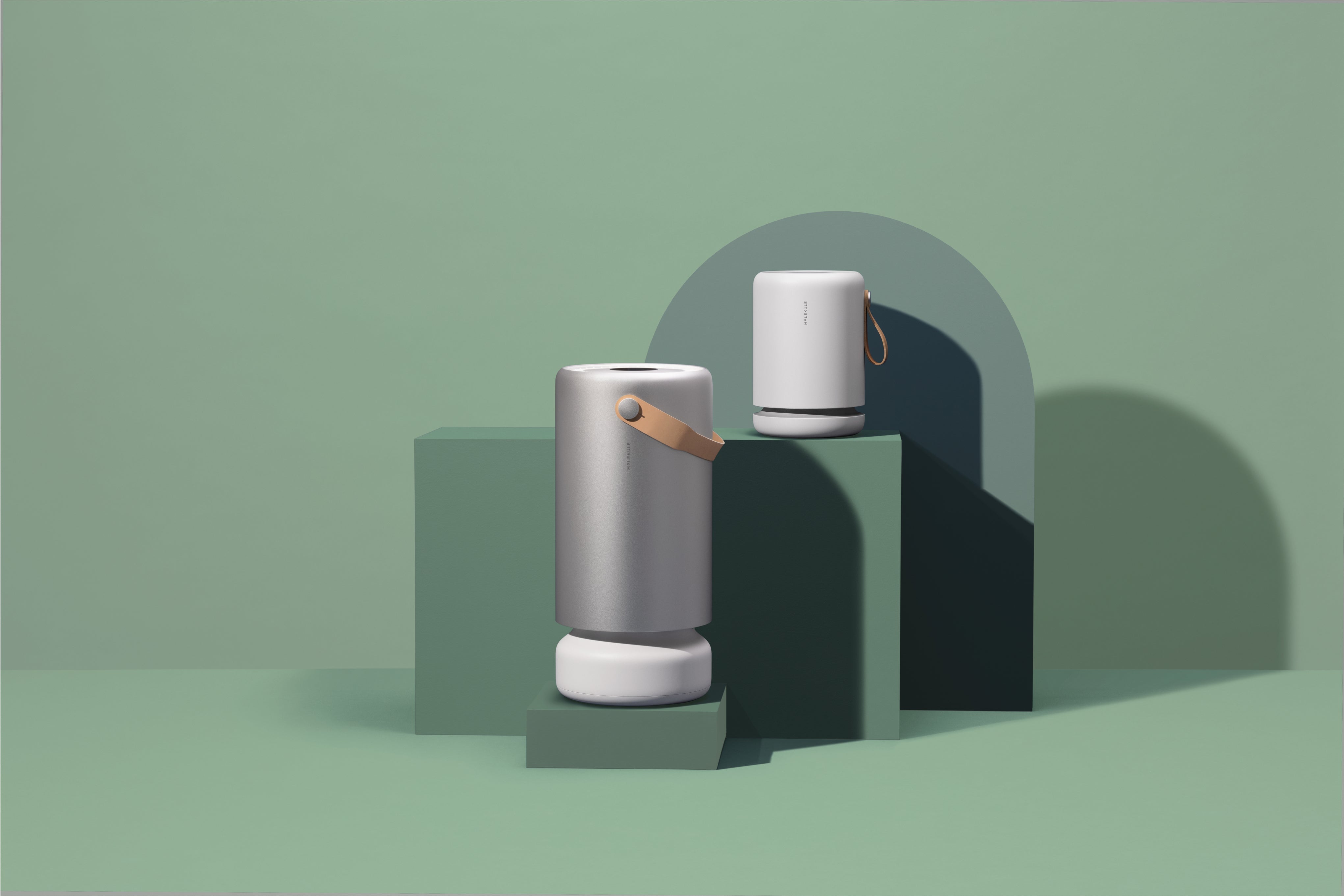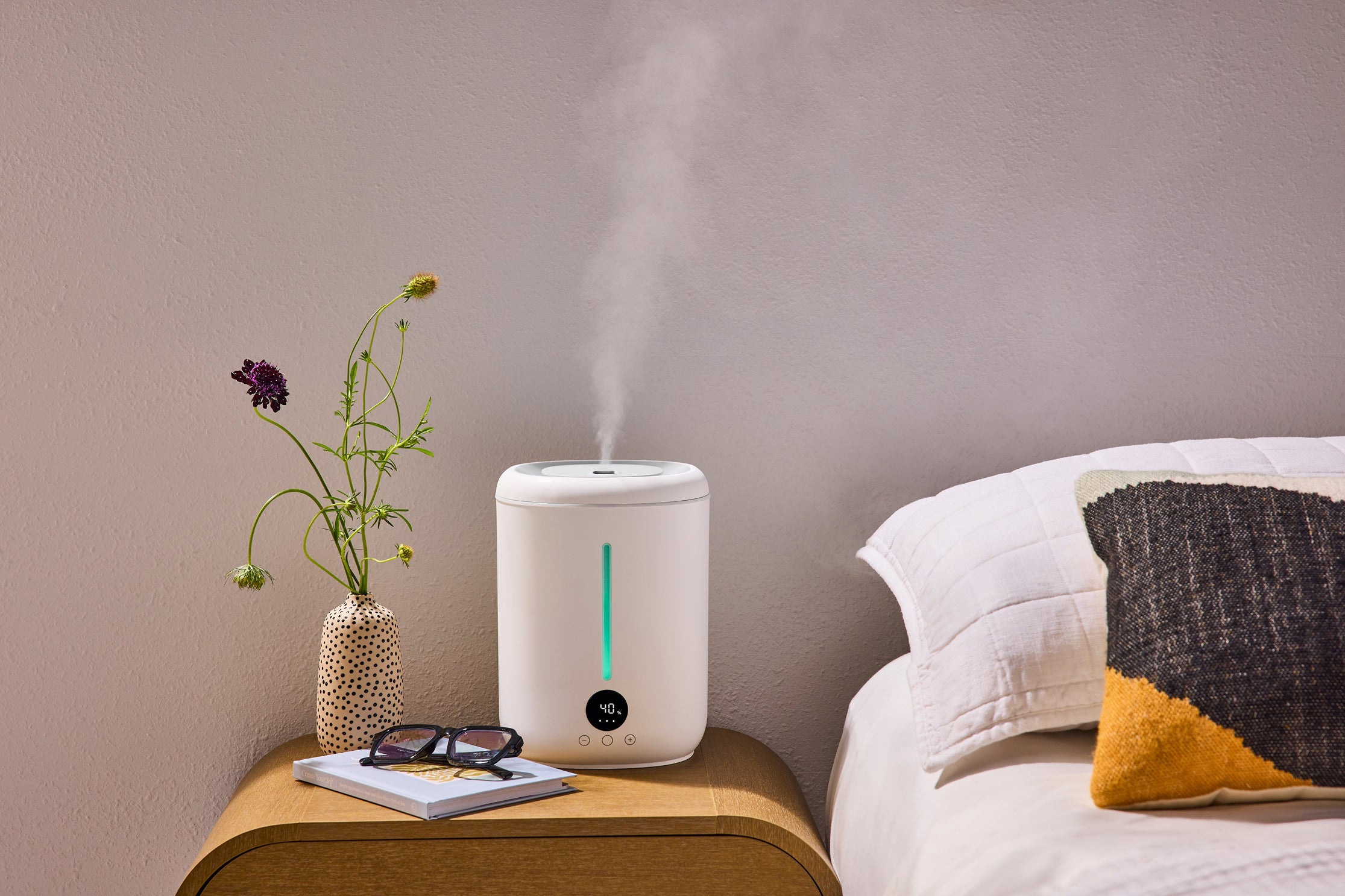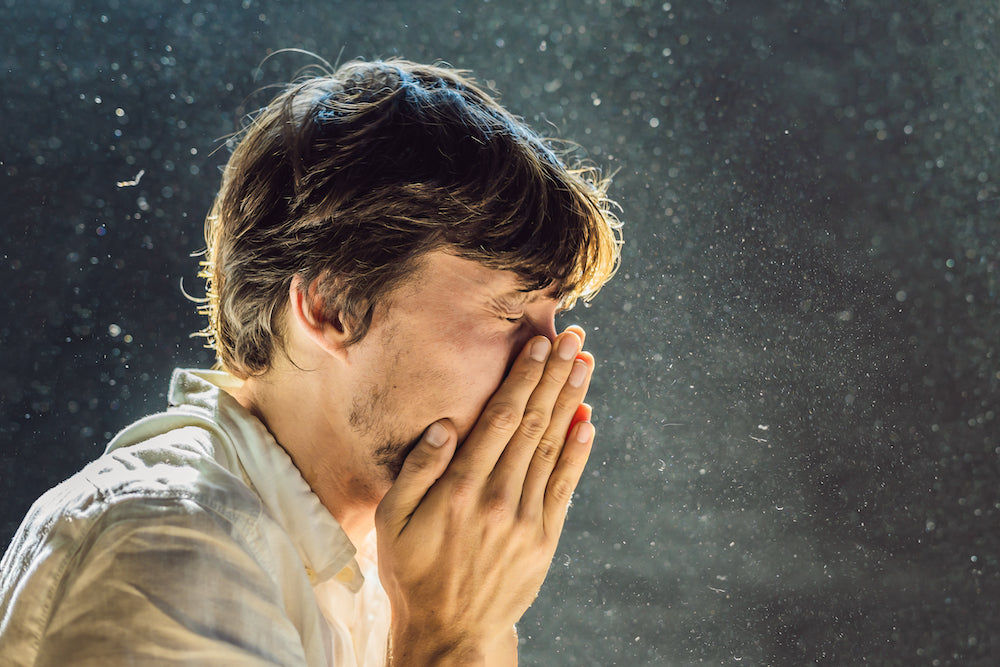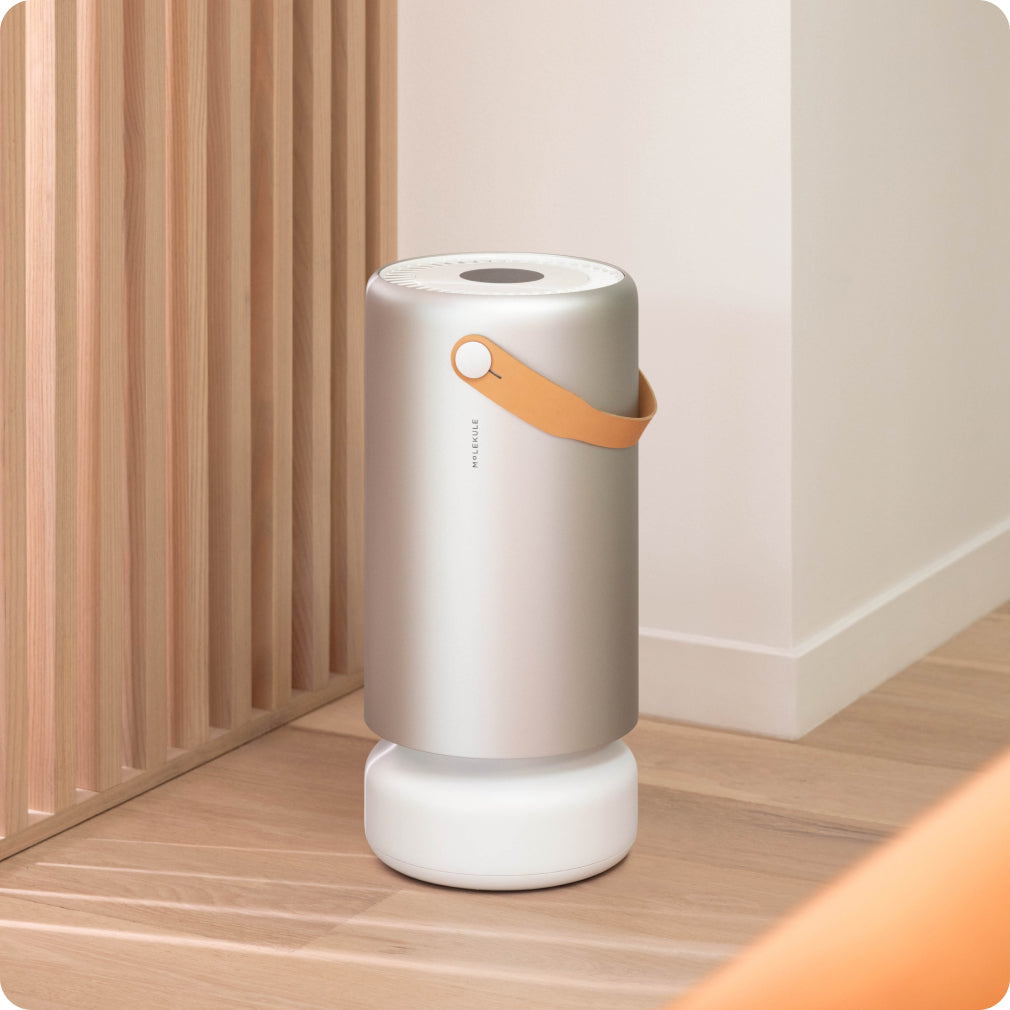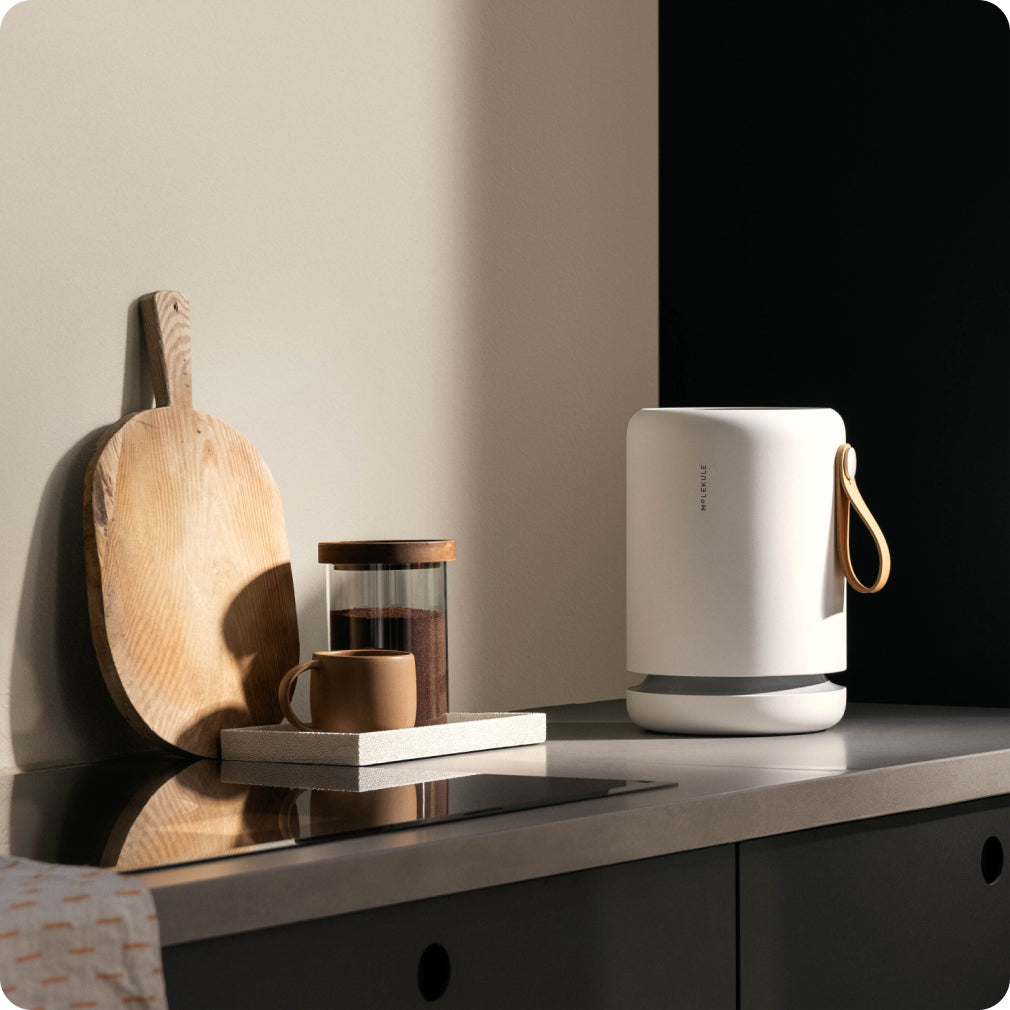Last updated by the Molekule Insights Team on February 16, 2024.
Living with allergies or asthma can sometimes make your day-to-day life feel a bit like walking through a minefield. When exposure to specific allergens make symptoms flare up and ruin your day (or worse), making your home a safe place free from potential triggers becomes all the more important.
Unfortunately, as long as there are humans living in your home, dust mites will follow (unless you live in the desert or keep your home's humidity very low.) These tiny pests live in your home, feed on the skin flakes you and your creatures shed, and they are small enough to hide in the tiniest nooks and crannies, often uncomfortably close to where you lay your head. The good news is that you do not need to eliminate one-hundred-percent of the dust mites in your home to see a reduction in the asthma and allergy symptoms they can cause.
Read on to learn more about dust mites, why they can trigger asthma and allergy symptoms, and what you can do to make your home a safe place for people with dust mite sensitivity.

What are dust mites and where do they come from?
Dust mites are one of the most common triggers of allergy and asthma symptoms. They produce digestive proteins, mainly present in their waste, that cause allergenic responses and can disrupt the airways and skin barrier. These microscopic pests are present year-round in homes around the world. Like spiders, dust mites are arthropods, meaning that they have eight legs. However, unlike spiders, dust mites are too small to be seen with the naked eye.
Though dust mites are present all year, there are typically more of them during the humid months of summer. Because they survive by absorbing moisture in the air through spongelike glands on their head, they cannot survive in environments with low humidity. Dust mites generally prefer temperatures between 68 and 77 degrees Fahrenheit and humidity levels of 70 to 80%.
Dust mites mainly feed on the dead skin cells shed by humans and animals. These dead skin cells are a major part of household dust, which is why dust mites are so attracted to it. Thankfully, you do not have to worry about being bitten or stung by dust mites — even if they were big enough to bite you, they would not be interested because they prefer skin cells that have gone through a decomposing process rather than fresh ones, once they’ve become tasty, digestible snacks of yeasts, bacteria, and fungi.
In the home, dust mites are found mostly on carpets, curtains and upholstered furniture; and they love bedding most of all—one study states that a typical used mattress can be home to anywhere between 100,000 and ten million dust mites. They tend to gather in higher concentrations in the rooms and areas where people spend most of their time (hence the bedroom, where we spend about a third of our lives). Dust mites cannot fly, but they (along with their droppings) are easily stirred up into the air by human activity, such as vacuuming, sitting on upholstered furniture, making the bed and sleeping.
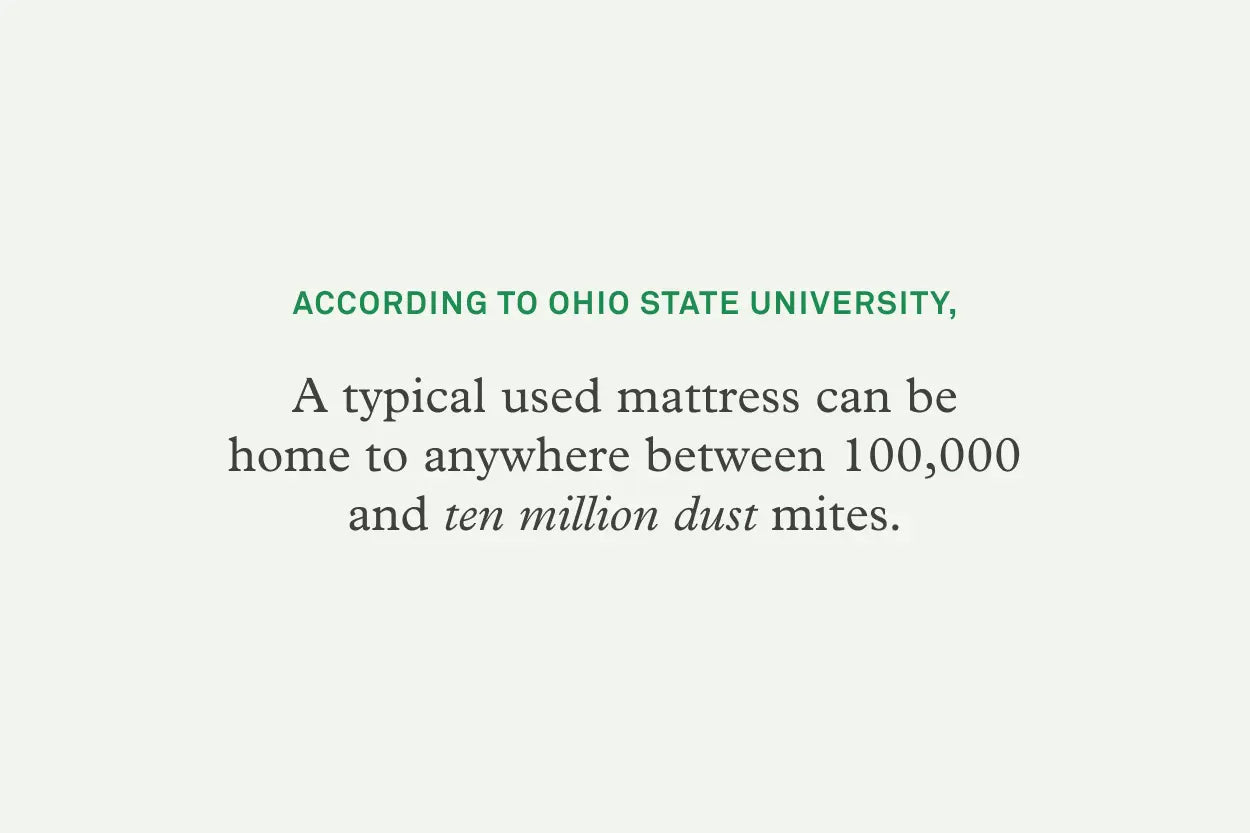
How can dust mites affect your health?
When dust mite allergens — mainly their waste and body parts — are kicked into the air, they are easy to inhale due to their microscopic size. For many people, this is not a major concern (even if it is a little gross to think about). However, if you are sensitive to dust mite allergens, inhaling these particles can cause your immune system to go on the attack. There is also evidence showing that inhaling dust mite extracts can modulate the function of skin, nasal and ocular mucus membranes, and lung epithelium, regardless of allergens.

People who are allergic to dust mites can experience nasal swelling when they breathe in dust mite particles. Dust mites produce various proteins which act like scissors, breaking the connections between cells in our respiratory system. This process weakens the cell layer, leading to cell shedding or desquamation, or cell death in the lungs. Ultimately, this can contribute to allergic reactions and inflammation in the airways.
Inhaling dust mites and their secretions can cause symptoms, such as:
- Runny nose
- Nasal congestion
- Sneezing or coughing
- Itchy, watery eyes
- Itching in the nose, throat, or roof of the mouth
- Pressure or pain in the face
If dust mites are one of your asthma triggers, exposure may cause further symptoms, including:
- Trouble breathing
- Chest pain or tightness
- Wheezing
- Coughing bouts
- Trouble sleeping caused by the above symptoms
Dust mite allergies can also cause atopic allergic reactions, like rashes and eczema.
Most exposure to dust mite allergens happens in bed. Turning in your sleep, making the bed, and other movements can disturb dust mite particles and cause them to become airborne. If you are sensitive to dust mites, you may notice your allergy and asthma symptoms worsen overnight and in the early morning after prolonged exposure to the particles.

Can air purifiers help remove dust mites?
The short answer is yes, some air purifiers may be able to remove airborne dust mite allergens in your home. However, they should not be your only line of defense.
Dust mites are microscopic and plentiful. They can get down into the tiny crevices in your couch, carpet and mattress. So you should not expect an air purifier to rid your home of dust mite allergens completely. Instead, you can focus on minimizing your household exposure to dust mites. According to scientific research, the best way to do this is through a multi-step approach — removing allergens from the air, making your home less hospitable to dust mites and destroying some of their favorite places to gather.
Which type of air purifier is best for dust mites?
If you are going to use an air purifier to help control the dust mite allergens in your home, you will want one that is going to be up to the job. Here are some of the main types of air filters on the market today and how they stack up against dust mites.
HEPA Filters
Probably the most common type of air purifier on the market, HEPA filters are designed to trap particle pollution. As air passes through the filter, it should capture at least 99.97% of airborne particles that are 0.3 microns or larger. (For reference, dust mites are around 250 microns, though their body parts and waste can be much smaller.)
Note: Though HEPA filters may be able to capture dust mite allergens, they are ineffective against gaseous pollutants, such as volatile organic compounds (VOCs), unless equipped with additional technology. New research has found that PECO destroys what HEPA leaves behind.
Carbon Filters
Where HEPA filters can only trap airborne particles, carbon filters are strictly designed to capture gases. They do this through a process called adsorption, meaning that gaseous pollutants stick to the filter as air passes through it. This process does not work on particles, however. Dust mite allergens (along with any other particle pollutants) can simply pass right through the filter.
Ionizers and Ozone Generators
Ion generators work by charging the airborne particles in a room and making them attracted to surfaces. In a nutshell, this technology makes pollutants heavy and “sticky” so that they leave the air and settle on the surfaces of your home. Airflow and human activity however may cause settled particles to enter the air again.
Ozone generators are sold as air purifiers as well, but research from the Environmental Protection Agency (EPA) found that ozone is not an effective way to remove any type of pollutants from the air.
Moreover, ionizers and ozone generators both can add ozone, a dangerous gas, to the air inside your home. Exposure to ozone has been linked to coughing, shortness of breath, chest pain, coughing, throat irritation and respiratory illness.
PECO Technology
Photo Electrochemical Oxidation (PECO) technology, found in Molekule air purifiers, uses free radicals to trap and destroy airborne pollutants. PECO breaks down particles at the molecular level.
This technology is effective against viruses, bacteria, gases and particles up to 1,000 times smaller than the particle size that the HEPA standard tests. That is thorough enough to take care of even the tiniest bits of dust mite allergens.
Molekule's latest innovation, the PECO-HEPA Tri-Power filter, harnesses the power of PECO, HEPA, and carbon to trap 99.97% of small particles, destroy organic pollutants (including dust mites), and reduce odors and toxic gases.

Are there other ways to get rid of dust mites?
While an air purifier can help remove dust mite allergens from your breathing zone, it should be part of a bigger plan to minimize exposure in your home. Research tells us that using only one method of dust mite control is typically not enough to make a difference and you will get the most benefit from a multi-step approach. Actions you can take to protect your home from dust mites include:
- Get dust mite covers for your pillows, mattress, and box spring. These can prevent new dust mites from making their home in your bed, as well as cut off any existing mites from their food source.
- Wash your bedding weekly in hot water (at least 130 degrees Fahrenheit) to kill any dust mites that may have settled there.
- Get rid of non-washable fabrics. If possible, get rid of any curtains, upholstered furniture, or carpeting that you can’t regularly wash with hot water. Doing this will take away some of the dust mites’ favorite hiding places.
- Reduce the humidity in your home. Dust mites rely on the water in the air to survive. You can make your home less welcoming to these tiny pests by using a dehumidifier to keep your home below 50% humidity. (Remember, 70 to 80% humidity is where dust mites thrive.)
- Dust regularly. Use a damp mop or cloth to clean the visible dust in your home. Dry dusting usually just stirs the dust up and reintroduces it into the air.
- Use a vacuum with a HEPA filter. Though vacuuming alone is not an effective way to manage dust mites in your home, it may help remove some of the dust mite allergens from your rugs and carpets.
- Wear a mask while you clean. If you are sensitive to dust mites, you should protect yourself from exposure while cleaning (or ask someone who is not sensitive to help out). There is no way to avoid stirring up dust mite particles while you are moving things around, and a mask may help you avoid symptom flare-ups.
If you are concerned about dust mite allergens, minimization is the name of the game. It is simply not realistic to try to eliminate all of the dust mites in your home. However, by incorporating the above tips into your routine — and sticking to it — you should be able to reduce your exposure to dust mites and go back to breathing easier in your own home.
